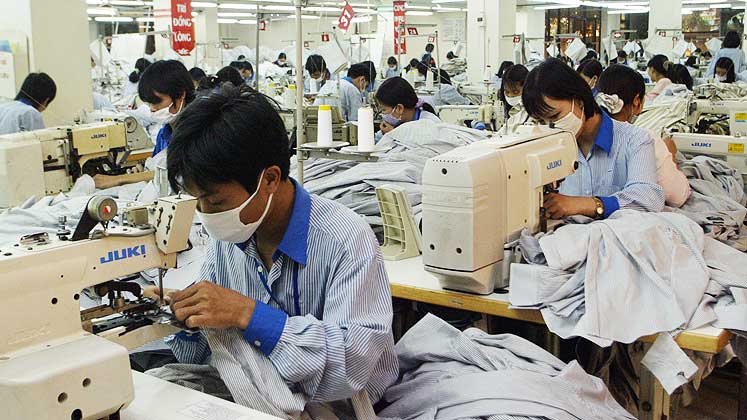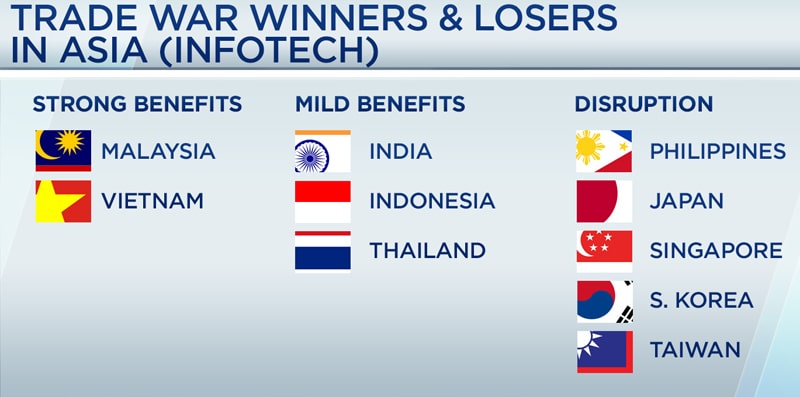At the onset of 2018, Vietnam’s garment and textile sector had projected an export target of US $ 34 billion for the year. Notably, within six months, the target was revised to US $ 35 billion owing to huge increase in orders from several foreign firms. In fact the first eight months of 2018 saw Vietnam clock an astounding US $ 20 billion and it was evident back in August 2018 that Vietnam will manage to surpass the newly set target. According to a recent survey, over 93 per cent firms were positive of the country’s apparel exports to generate big numbers as fibre and garment firms predicted a steep growth in order intake. Nearly 6,500 manufacturing and processing units were a part of the survey.

Back then, Vu Duc Giang, Chairman, Vietnam Textile and Apparel Association (VITAS) had substantiated, “With positive results in the first month of the year, the total export turnover of garment and textile industry in 2018 is expected to reach US $ 35 billion, exceeding the target by about US $ 1 billion.” And that is what happened. Giang, while addressing a conference in Hanoi on 14 December 2018, was elated to announce that Vietnam’s garment and textile industry registered an astonishing export turnover of US $ 36 billion in 2018 – an impressive increase of 16 per cent compared to 2017. This is the highest increase in the last three years.
Putting aside the fact that many local garment companies in Vietnam are booked till the first quarter of 2019 and some even for the first six months, the sudden development of the US-China trade war is also going to bring in richer rewards for the industry in Vietnam. This is a strong enough reason for VITAS to set an apparel and textile export target of US $ 40 billion in 2019.
Orders shifting from China…
In fact, Vietnam’s apparel exports to US alone reached nearly US $ 14 billion (at an increase of 10.7 per cent) by the end of 2018 and lot of import orders have been moving fast to Vietnam as an impact of the trade war since late last year. US and China’s levying of heavy taxes has been significantly affecting billion-dollar worth imports worldwide and this is becoming a big cause of worry for global trade.
While corroborating further on the same, a representative from VITAS averred, “If Chinese textile and garment items incur high tariffs in the US, it would be beneficial to China’s direct competitors, such as Vietnam, Cambodia and Bangladesh.”
Besides, when China’s textile and garment export faces a threat, the Chinese Government may put in some extra efforts to move export production to its neighbouring countries like Vietnam and Cambodia, so as to make complete use of these nations’ comparative advantages on labour costs and business expenses. “It is important to note that as labour wages have shot up in China in recent times, the country has not invested in export production, which has significantly reduced its competitiveness against Vietnamese export products,” said Le Quang Hung, Chairman, Saigon Garment JSC.
Vietnam is, therefore, on the way up. A lot of importers from USA too, probably charged up by the ongoing trade war, are shifting their import orders from China to other neighbouring countries and Vietnam is one that tops the list. Also, according to figures released by VITAS, Vietnam’s apparel and textile export from US was around US $ 6.4 billion – a 12.5 per cent increase year-on-year. This also amounts to 47.7 per cent of the sector’s total export value.
According to Vietnam International Securities Joint Stock Company, US has imposed 25 per cent import along with tax on garments and textiles from China, which gives clear-cut advantage to Vietnam. Out of the 20 Chinese apparel items that have been taxed, Vietnam has some of them like woven fabrics, synthetic fibres and canvas fabrics, among others.
US seems to be in a more precarious position than China due to the trade conflict; after all according to OTEXA, 33.67 per cent of apparels in US, in 2017, originated in China. Higher tariffs mean US multinational firms in China and the local Chinese companies get huge incentives to shift the apparel orders to countries like Vietnam, Cambodia and Philippines.
EU threat to Cambodia too may work in Vietnam’s favour…
Cambodia is also emerging as one of the strongest contenders for Vietnam in becoming an apparel manufacturing base – especially for several international brands that are now thinking of taking away production from China. “Keeping trade war aside, China’s rising labour costs and a more stringent enforcement of regulations, such as environment-related laws, will also prompt more and more factories to leave China, and Cambodia stands to benefit from this,” said Kaing Monika, Deputy Secretary General, Garment Manufacturers Association in Cambodia (GMAC).
Companies like Steve Madden, known for their footwear, have already started shifting their production to Cambodia from China and the figures are only expected to rise in the coming years.
However, the European Union (EU) had in early October 2018 strongly warned that Cambodia may lose its special access owing to its shifting from democratic governance. It might be recalled that lot of countries had condemned the ruling party in Cambodia for employing undemocratic practices to win the elections that were held in July 2018. Annihilating the opposition, fighting the elections without any opposition and also influencing people – including garment workers – to vote for them received flak from EU.
If the EU withdraws Cambodia of its trade privileges, apparel exports could be in doldrums as it accounts for 40 per cent of the country’s GDP and this can bring direct benefits to a country like Vietnam. Though the first six months of 2018 have witnessed a surge of 10.73 per cent in the country’s apparel exports, the threat of EU withdrawing the access advantage as well as the rumours of bigger brands planning to leave the country could open more gates for Vietnam.
Philippines has its own issues…
Philippines too has been getting lots of orders lately mainly owing to the ongoing trade war between USA and China. However, the country is now running short of compliant factories. “While the country has been receiving non-stop inquiries from buyers since last few months of 2018, due to the US-China trade war, the lack of compliant factories in the Philippines is fast becoming a concern,” reasoned Robert Young, President, Foreign Buyers Association of the Philippines (FOBAP).
Philippines does have good resources and potential, but the inability of its garment factories to comply with buyers’ requirement that includes compliance of healthy working conditions and child labour, is making the country lose to Vietnam. What can be more worrying to Philippines than 20 of its garment factories being found to be non-compliant in a single audit done by the buyers.
Though many Chinese garment companies are now investing in Bataan province in the Philippines to avoid paying taxes imposed by US on apparels made in China, the truth of the matter is that Philippines may still not have enough compliant factories to handle the volumes – something where Vietnam will score yet again.
So, are there any negative factors working against Vietnam? Not anything glaring! According to Vietnam International Securities Joint Stock Company, when the supply to the United States declines, China will seek alternative markets, so Vietnam will be more or less affected. In addition, China is the main import market of Vietnam raw textile materials.
Many Vietnamese spinning companies are exporting 70 to 80 per cent of their production to this market. In the near future, when the US-China trade war widens, items such as fabric and yarn will be affected first and directly. China-based firms facing higher tariffs will redirect their raw materials exports’ towards Vietnam to hide the origin of their Chinese-made products to avoid tariffs. This practice may affect the local industries in Vietnam. On the whole, Vietnam is expected to gain more from this ongoing battle, though Apparel Resources will be closely reading the future developments.









